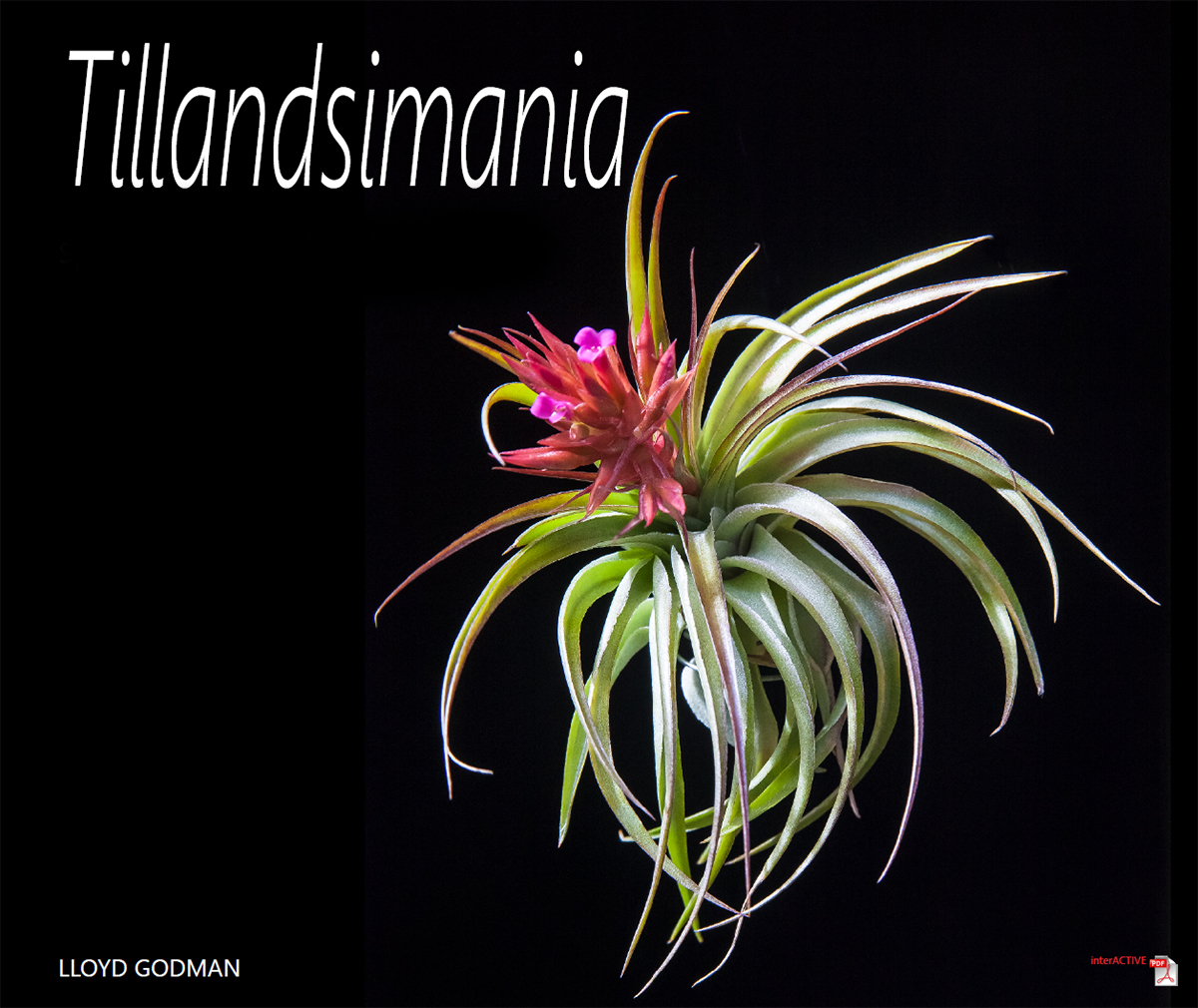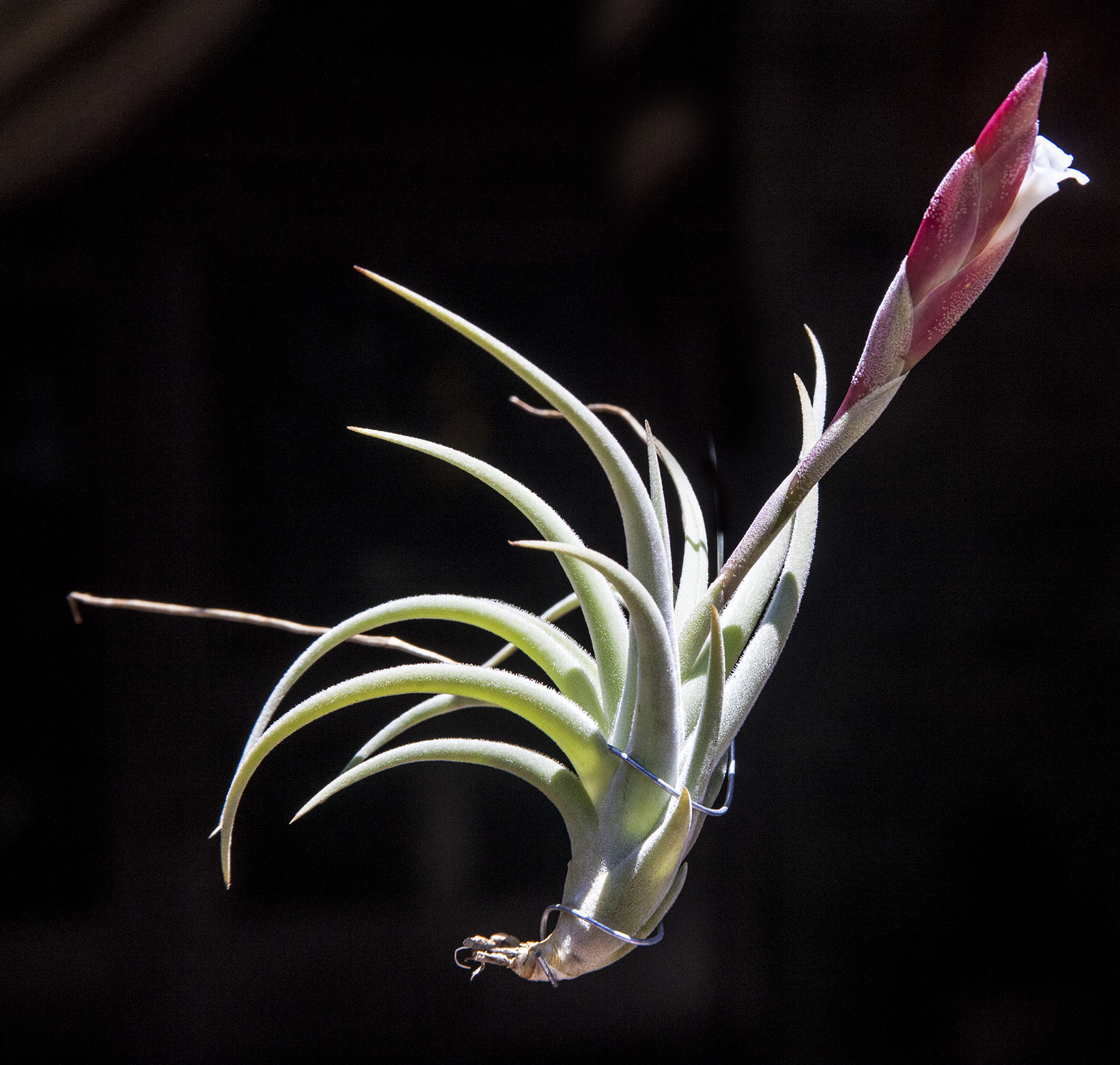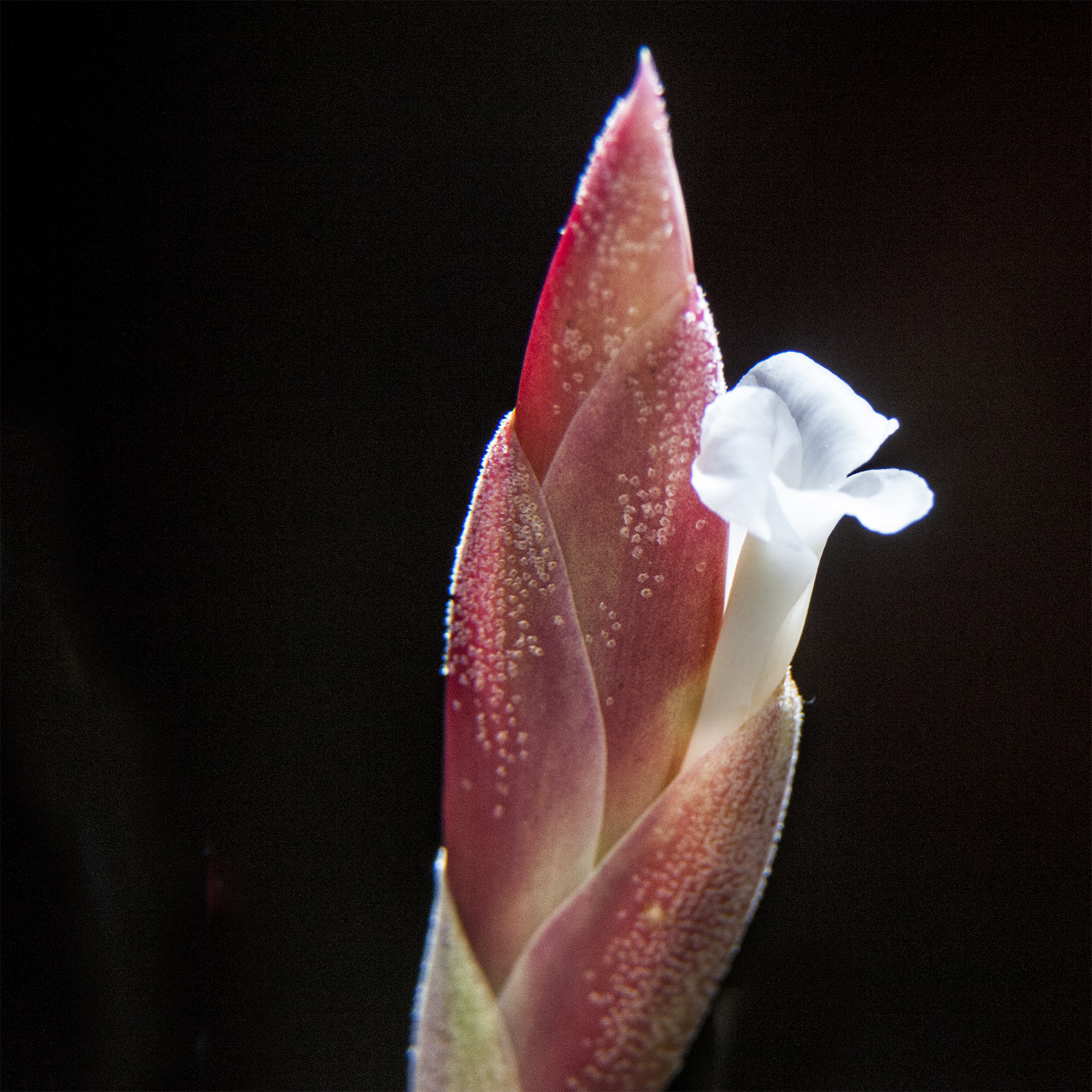A
catalogue of Bromeliads used for various projects by - Lloyd Godman
This
is a catalogue of bromeliads used by Lloyd godman for his various installations
and photosynthesis projects - the collection of pants he accessed in
New Zealand from 1996 - 2004 was collected from a wide range of sources,
while most were brought from Greens Bromeliads, some were also donated
by the Dunedin Botanical Gardens. Later in 2004 these plants were either
sold or given away with his move to Australia.
Lloyd is at present re-establishing his collection where he now lives
in Melbourne.
A
Lexicon of Bromeliads: A
resource by Lloyd Godman
Genus - Tillandsia: Sub-Family - Tillandsioideae: Family - Bromeliad
Tillandsias
are regarded as true air plants and as such are among the most unusual
of the Bromeliad family. They range from bulbous forms and grass like
structures to silver tufted masses. Typically they grow where there
is free air movement like high treetop environments or across open rock
faces, and often they are heavily covered in silver trichomes that help
reflect the high levels of sun light they receive in these locations.
While some tolerate temperatures as low as 5 degrees C (40 degrees F),
or even lower, most prefer temperatures of around 10-32 degrees C (50-32
degrees F). While they require high levels of humidity, they need to
dry out quickly and completely between misting or watering. As the trichome
scales open to absorb moisture and close to retain it, it is important
that the plants are given time to dry out and most plant deaths occur
because of over watering.
Tillandsimania - is an interactive PDF and a work in progress which is updated annually for more information - Tillandsia – air plant E book
$32 Australian including P&P To purchase a DVD
email lloydgodman at gmail.com
|

|
Tillandsia bermejoensis |
|
|


|
Native distribution and habitat: T. bermejoensis is endemic to Bolivia at elevations between 500 -1500m on vertical cliffs around Eastern slope of Sierra de Santa Cruz and Samaipata and Angostura.
Growth habit: It form a loose rosette of about 100 - 150 mm, and clumps quickly into neat ball forms.
Foliage: The foliage is typically a light green dusted with silver trichomes
Flowers: At flowering time an inflorescence about 150 -200 mm with red pink bracts and white petals
Seed:
Pups:
Cultivation: Although some texts suggest it is cold sensitive it is a fairly easy plant to grow, but keep on the dry side in winter.
Availability: Not often available.
.
|
|